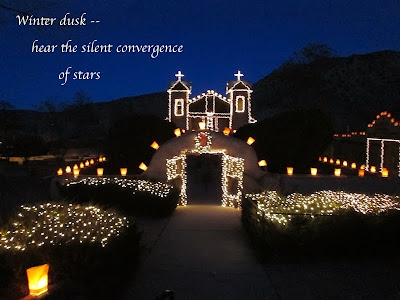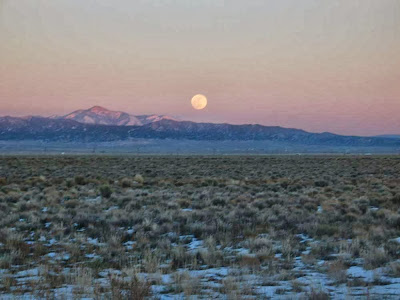These lines from a poem in
Mary Oliver's recent collection reminded me why I love this place so much:
I go out
to the pale dunes, to look over
the empty spaces
of the wilderness.
For something is there,
something is there when nothing is there but itself,
that is not there when anything else is.
* * *
from "Extending the Airport Runway"
in A Thousand Mornings
Mary Oliver, Penguin Press 2012
From the perspective of a culture that revolves around cycles of building and manufacturing alternating with cycles of consuming and discarding, it does seem that there's nothing out here. It's not even a very good place for recreation. One of our "neighbors" set up a tent on their property the summer before last, apparently hoping to enjoy a little fishing and camping. They left the tent in place when they went home, and it quickly blew down, exposing the belongings they'd left to the sun, the wind and the scavengers who haunt Blanca Flats. When they returned a month or two later, they set up a pre-fab shed. The shed lasted for awhile before it finally gave in to the wind and fell apart.
Jake and Shelby have always loved to sniff around the remains of that place. There were apparently a couple of canine guests on the property at one time, and our dogs are either attracted to the scents they left behind or to the burned traces of a barbecue. When I walk with them down that road, I always have trouble dragging them away. A few days ago, just to see what the dogs found so enthralling, I went to explore the site.
There's nothing there now but a big hole in the ground, where the people have set up an impromptu landfill. A faded black sofa inhabits the landfill, along with the discarded toilet that seems to be an obligatory part of the landscape around here (there's one of those on our property, too, left by the previous owner). So this parcel of property has devolved from a campsite to a storage space to a dump.
Why do some people think that in landscapes like this, where
nothing is there to appeal to the building/consuming mind, the only acceptable alternative is to use the land for waste disposal? It's more than just a practical decision, I think; it's an act of contempt, a gesture of resentment against a land that didn't welcome them on their own terms.






















